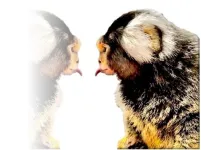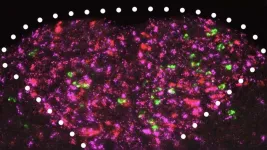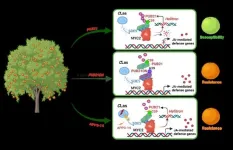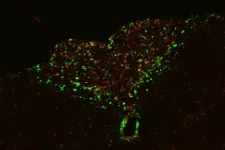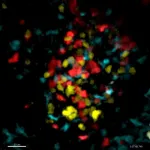(Press-News.org) A combined study on the morphology of the human pelvis – leveraging genetics and deep learning on data from more than 31,000 individuals – reveals genetic links between pelvic structure and function, locomotion, and childbirth outcomes, researchers report. The findings offer fresh insights into how our species evolved to balance the competing demands of bipedalism and childbirth. The transition to bipedalism in hominins led to significant changes in pelvic morphology, including a shorter and wider pelvis, which facilitated an upright posture and efficient locomotion. However, this adaptation also created a challenge for childbirth, as the narrowing of the birth canal made it difficult for babies with larger brains to pass through. This conflict – known as the "obstetrical dilemma" – has sparked debate for decades. It has been suggested that the dilemma may have been alleviated through evolution, with humans giving birth to less developed infants, allowing them to pass through the birth canal more easily. However, this theory has been challenged by recent studies showing human gestation and newborn size are comparable to other primates of similar size. While functional genomic studies on gene expression and comparisons between great apes and humans have provided insights into pelvic development, the genetic basis for pelvic morphology in humans remains largely unknown. To study the genetic basis of the human pelvis, Liaoyi Xu and colleagues used full-body dual-energy x-ray absorptiometry (DXA) images and genetic data from 42,284 individuals in the UK Biobank. Using a deep-learning approach on 39,469 high-quality DXA images, Xu et al. derived a comprehensive set of 7 skeletal measurements of the human pelvis and performed genome-wide scans to identify genetic loci associated with variations in pelvic proportion. Xu et al. uncovered 180 independent genetic loci associated with pelvic shape and found sex-specific differences in genetic architecture, as well as asymmetries in pelvic structure linked to handedness. They also found that wider birth canals are genetically associated with slower walking speed and greater risk of pelvic floor disorders, but also with a reduced risk of obstructed labor. Moreover, the study found no evidence that shorter gestation evolved to ease childbirth, but did observe genetic correlations between pelvic shape and head size, hinting at evolutionary responses to the challenges of birthing large-brained infants.
END
Genotype-to-phenotype map of human pelvis illuminates evolutionary tradeoffs between walking and childbirth
Summary author: Walter Beckwith
2025-04-10
ELSE PRESS RELEASES FROM THIS DATE:
Pleistocene-age Denisovan male identified in Taiwan
2025-04-10
A fossil Pleistocene-age hominin jawbone discovered in Taiwan has now been identified as belonging to a Denisovan, according to a new paleoproteomic analysis of the remains. The findings provide direct molecular evidence that Denisovans occupied diverse climates, from the cold Siberian mountains to the warm, humid subtropical latitudes of Taiwan, and offer new morphological insights into this enigmatic hominin lineage. Recent research has revealed a surprising variety of ancient human relatives that lived in eastern Asia during the Pleistocene before modern humans arrived. One of the most important discoveries is the Denisovans, a distinct group identified through DNA ...
KATRIN experiment sets most precise upper limit on neutrino mass: 0.45 eV
2025-04-10
Researchers from the KATRIN (Karlsruhe Tritium Neutrino) experiment report the most precise measurement of the upper mass limit of the neutrino to date, establishing it as 0.45 electron volts (eV) – less than one-millionth the mass of an electron. The findings tighten the constraints on one of the universe’s most elusive fundamental particles and push the boundaries of physics beyond the Standard Model. Neutrinos – electrically neutral elementary particles – are the most abundant particles in the universe and ...
How the cerebellum controls tongue movements to grab food
2025-04-10
By studying the skilled movements of marmoset tongues, researchers have discovered that Purkinje cells (P-cells) in a brain region called the cerebellum signal to stop protrusion as the tongue approaches its target, according to a study published April 10th in the open-access journal PLOS Biology by Reza Shadmehr from Johns Hopkins School of Medicine, U.S., and colleagues.
We use our tongue to shape the air and generate sounds to communicate, and we use our tongue to evaluate food morsels and transport them through the oral cavity when eating. These skillful acts involve coordination of more ...
It’s not you—it’s cancer
2025-04-10
Cancer ravages both body and mind. If you’ve ever lost loved ones to the disease, you might recognize the physical and emotional changes cancer patients often endure during their final months. They seem drained of strength and spirit. Even people who’ve maintained a positive outlook throughout their lives can enter a state of despair. New research published in Science suggests apathy and lack of motivation are symptoms of a condition called cancer cachexia. Cold Spring Harbor Laboratory ...
Drug pollution alters migration behavior in salmon
2025-04-10
In the largest study of its kind to date, a team of international researchers has investigated how pharmaceutical pollution affects the behaviour and migration of Atlantic salmon.
The study, led by the Swedish University of Agricultural Sciences, revealed that commonly detected environmental levels of clobazam – a medication often prescribed for sleep disorders – increased the river-to-sea migration success of juvenile salmon in the wild.
The researchers also discovered that clobazam shortened the time it took for juvenile salmon to navigate through two hydropower dams along their migration route – obstacles that typically ...
Scientists decode citrus greening resistance and develop AI-assisted treatment
2025-04-10
In a groundbreaking study published in Science, a research team led by Prof. YE Jian from the Institute of Microbiology of the Chinese Academy of Sciences has identified the first mechanism of citrus resistance to citrus greening disease, or huanglongbing (HLB).
Utilizing artificial intelligence (AI), the team has also developed antimicrobial peptides that offer a promising therapeutic approach to combat the disease. This discovery addresses a long-standing challenge in the agricultural community—the absence of naturally occurring HLB-resistant genes in citrus.
Citrus ...
Venom characteristics of a deadly snake can be predicted from local climate
2025-04-10
Local climate can be used to predict the venom characteristics of a deadly snake that is widespread in India, helping clinicians to provide targeted therapies for snake bite victims, according to a study publishing April 10 in the open-access journal PLOS Neglected Tropical Diseases by Kartik Sunagar and colleagues at the Indian Institute of Science.
Russell’s viper (Daboia russelii) is found across the Indian subcontinent and is responsible for over 40% of snake ...
Brain pathway links inflammation to loss of motivation, energy in advanced cancer
2025-04-10
The fatigue and lack of motivation that many cancer patients experience near the end of life have been seen as the unavoidable consequences of their declining physical health and extreme weight loss. But new research from Washington University School of Medicine in St. Louis challenges that long-held assumption, showing instead that these behavioral changes stem from specific inflammation-sensing neurons in the brain.
In a study published April 11 in Science, the researchers report that they identified a direct connection between cancer-related inflammation ...
Researchers discover large dormant virus can be reactivated in model green alga
2025-04-10
Researchers had been studying the green alga Chlamydomonas reinhardtii for decades without seeing evidence of an active virus within it — until a pair of Virginia Tech researchers waded into the conversation.
Maria Paula Erazo-Garcia and Frank Aylward not only found a virus in the alga but discovered the largest one ever recorded with a latent infection cycle, meaning it goes dormant in the host before being reactivated to cause disease.
“We’ve known about latent infections for a long time,” said Aylward, associate professor in the Department of Biological Sciences. ...
New phase of the immune response uncovered
2025-04-10
The research groups led by Wolfgang Kastenmüller and Georg Gasteiger employed innovative microscopy techniques to observe how specific immune cells, known as T-cells, are activated and proliferate during a viral infection. Their findings revealed novel mechanisms: the immune system amplifies its defense cells in a far more targeted way than previously believed.
T-Cells Proliferate and Specialize During the Immune Response
T-cells are crucial defense cells in the immune system. To effectively ...
LAST 30 PRESS RELEASES:
How cells balance their protein levels
Nirsevimab vs RSVpreF vaccine for RSV–related hospitalization in newborns
Effectiveness and impact of maternal RSV immunization and nirsevimab on medically attended RSV in US children
AI gives scientists a boost, but at the cost of too many mediocre papers
Next-generation vision model maps tree growth at sub-meter precision
Genes aren’t destiny for inherited blindness, study shows
MIT study: High-fat diets make liver cells more likely to become cancerous
Exposure to multiple fine particulate matter components and incident depression in the US Medicare population
Risk of burdensome health care spending over time in the US
Nirsevimab against hospitalizations and emergency department visits for lower respiratory tract infection in infants
New microfluidics technology enables highly uniform DNA condensate formation
A new strategy for immune tolerance
Super Mario Bros. help fight burnout: New study links classic games to boosted happiness
Deepest gas hydrate cold seep ever discovered in the arctic: International research team unveils Freya Hydrate Mounds at 3,640 m depth.
Integrating light and structure: Smarter mapping for fragile wetland ecosystems
ACA-SIM: A robust way to decode satellite signals over complex waters
Probiotics can restore gut microbiome in breastfed infants
AI could help predict nutrition risks in ICU patients, study finds
Federal EITC has unexpected result, researchers say – it decreases domestic violence
Researchers identify gene that calms the mind and improves attention in mice
Artificial metabolism turns waste CO2 into useful chemicals
Ancient sea anemone sheds light on animal cell type evolution
Begging gene leads to drone food
How climate policies that incentivize and penalize can drive the clean energy transition
Can community awareness campaigns in low-resource areas improve early diagnosis of colorectal cancer?
Stardust study resets how life’s atoms spread through space
Practical education: Clinical scenario-based program development
The impact of family dynamics on eating behaviour – how going home for Christmas can change how you eat
Tracing the quick synthesis of an industrially important catalyst
New software sheds light on cancer’s hidden genetic networks
[Press-News.org] Genotype-to-phenotype map of human pelvis illuminates evolutionary tradeoffs between walking and childbirthSummary author: Walter Beckwith
